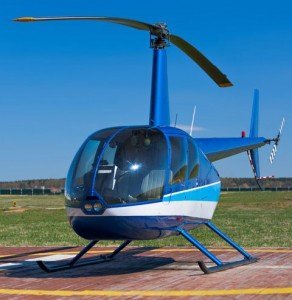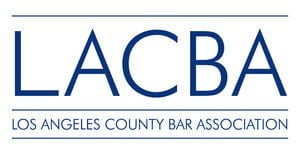As an avid commercially licensed pilot with an instrument rating, part of my practice is devoted to aviation law. Small aircraft defects are a serious problem, and according to a USA Today investigation several prominent manufacturers of fixed wing aircraft and helicopters have either failed to act, or have moved very slowly to address known defects which have resulted in substantial loss of life and severe injuries.

One of these manufacturers is Robinson Helicopter of Torrance, which sold hundreds of helicopters between 1993 and 2008 featuring a fuel tank design associated with fuel leaks and post-crash fires. T
In June 2014, USA Today conducted an in-depth investigative report on small aircraft defects and resulting crashes. It found that over the past 50 years, almost 45,000 people have been killed in general aviation (private airplanes and helicopters) accidents; nine times the number who died in commercial airline crashes.
According to the USA Today report, in 2013 alone, there were 1,199 general aviation crashes that killed 347 people, injured 517 people, and destroyed 121 aircraft. Federal investigators blame the vast majority of these private crashes — 86% — on pilot error. But USA Today found that small aircraft defects – meaning “defective parts and dangerous designs” – were responsible for many deaths.
Of particular concern is data suggesting that manufacturers have covered up potential small aircraft defects for years—neither fixing them nor issuing recalls—but paying hundreds of millions of dollars in legal settlements that were noticeably absent from public awareness and underreported to federal regulators. Largely to blame is that in 1994, the U.S. general aviation aircraft lobby persuaded Congress to bar death and injury claims resulting from accidents involving aircraft and/or parts that are over 18 years old. Nearly 75 percent of the U.S.’s 220,000 general aviation craft fall into this category.
Among the major manufacturers affected are Cessna, Bell Helicopter, Lycoming, and Robinson Helicopter. Robinson Helicopter is located in Torrance, here in the South Bay area of Los Angeles. Emerging evidence demonstrates that at least some of these manufacturers were well aware of potentially lethal small aircraft defects for years. If these allegations are proven, their failure to address some defects on a timely basis could potentially render these companies culpable for criminal acts.
Helicopter defects
The popular Robinson R-44 helicopter has been involved in hundreds of accidents, some resulting in severe injuries or fatalities due to fires associated with a faulty fuel tank design.
Perhaps the most problematic and widely cited helicopter defect responsible for fatal accidents are fuel tanks that easily rupture and ignite, even after low-impact survivable crashes and hard landings. The impact itself may rupture the tank, thus releasing fuel that easily ignites. USA Today found, since 1992, there were 79 deaths and 28 injuries as a result of helicopter fires following low-impact crashes.
Of particular concern is a growing awareness about the inherent defects in the fuel tank of the popular Robinson Helicopter R-44 that can be easily pierced by the mast in the event of a rollover, even though these problems were apparent less than a year after the craft’s initial release. Even though the U.S. Army has been installing crash-resistant fuel tanks since 1970 which have reduced American soldiers’ deaths, general aviation manufacturers have failed to retrofit their craft due to cost, instead, opting to pay millions in settlements to victims.
In 2006, in response to a Fredericksburg, Texas, crash that caused one of its helicopter to burst into flames, Robinson Helicopter issued Safety Notice SN-40 that “advised pilots and passengers to wear fire-retardant Nomex fiber suits to protect themselves in a fire” instead of actually fixing the problem. Sadly, after this advisory was issued, an additional 320 accidents involving Robinson helicopters occurred, and in all of these cases, none of the passengers or crew was wearing a Nomex suit.
In 2006, Robinson developed fuel-tank bladders for the R-44 and the earlier R-22. These bladders entered the market in 2009 for a price of $6,800 and also became standard on newly-manufactured helicopters.
Robinson Helicopter safety problems continue?
More recently, a July 27, 2015 post in Aviation Law Monitor reported that despite Robinson Helicopter’s installation of crash-resistant fuel tanks in 2010 to address their tendency to catch fire during accidents, ongoing problems continue. The NTSB asked the FAA to issue an order grounding R44 helicopters like the Australian government did in 2013. However, the FAA refused, asserting that it didn’t believe that the newer fuel tanks differed much from other helicopters and that if it did issue such an order, it would apply to many other manufacturers’ helicopters as well.
What is particularly troubling about this refusal is that the FAA has long since been aware of problems with older helicopters’ fuel tanks. In 1991, it issued regulations 14 Code of Federal Regulations (CFR) 27.952 and 29.952requiring manufacturers to install crash resistant fuel systems in their helicopters. But this order applied only to those helicopters designed and/or certified after 1994. Since the majority of US-manufactured light helicopters were designed before 1994, the regulations are essentially moot.
Even more recently, The US-based Commission on Accreditation of Medical Transport Systems (CAMTS) has unanimously decided that the 11th edition of its standards will strongly encourage adoption of crash resistant fuel systems pursuant to 14 CFR. 27.952 and 29.952 in helicopters it accredits due to the number of fatalities which occurred as a result of fuel system fires in otherwise survivable helicopter accidents.









